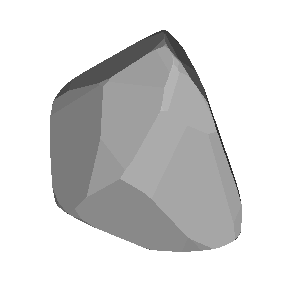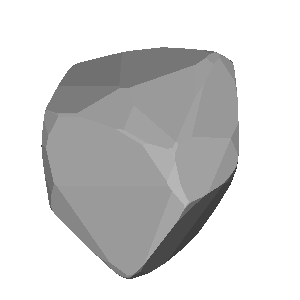2019-07-28 / 4UC 343-133579 / (586) Thekla
| # | OBS | Observer | Occ | Meth. | Instr. | CC | TSRC | UT1 | UT2 | UT3 | UT4 | UT2E | UT3E | Dur. | Chrd |
|---|---|---|---|---|---|---|---|---|---|---|---|---|---|---|---|
| 1 | show | Peter Tickner | O+ | CCD | M356 | UK | GPS | 21:46:56 | 21:48:37.23 | 21:48:45.58 | 21:50:42 | 1.17 | 1.00 | 8.35 | 73.5 |
| 2 | show | Tim Haymes | O+ | VID | M203 | UK | GPS++ | 21:47:00 | 21:48:37.07 | 21:48:45.07 | 21:49:55 | 0.96 | 0.64 | 8.00 | 70.4 |
| 3 | show | Simon Kidd | O+ | CCD | M350 | UK | GPS++ | 21:47:01 | 21:48:30.99 | 21:48:39.80 | 21:50:00 | 0.2 | 0.2 | 8.81 | 77.5 |
| 4 | show | O. Schreurs et al | O- | VID | M406 | BE | 21:46:45 | 21:49:45 |
4 observations found in db: euraster
Available (probably) matching predictions (click on the link to switch):| JPL#65 : 2d4a1b2f-8133-411d-a6c6-e5730af72eaf [db: observed] |
| JPL#65 : 43f6aa26-3cb8-4a6e-ba9c-f2049e203e5c [db: observed] |
Using prediction 2d4a1b2f-8133-411d-a6c6-e5730af72eaf for map and profile fit
| Ellipse and circular profile fits to the timings (chords) |
|---|
|
|
Auto-Fit Result: Ellipse profile fit was not successful. Trying circular fit. Circular diameter = 81 km From 3 chords (VID,CCD) You can enter space separated chord numbers (example: 11 4 8) or a method like VIS to ignore all visual timings, or a time source like RAD and NTP (but not GPS). If the plot disappears, then there are less than 2 chords left (too much ignored, go back with browser). Check SiMDA for size and mass data. Check Johnston Archive for satellites. |
Sky projection (artificial light) for occ. time: 2019-07-28, 21:48 UT (JD = 2458693.408)
| DAMIT | Q | P (h) | λ, β | JD0 | JD-JD0 | φ0 | Version | Modified | Vol-equiv D | Cmnt |
|---|---|---|---|---|---|---|---|---|---|---|
| # 1060 | None | 13.682 | 232°, 36° | 2.450109e6 | 8584.4 | 0.0° | None | None | not scaled | 2016-01-04 |
| # 1061 | None | 13.682 | 55°, 32° | 2.450109e6 | 8584.4 | 0.0° | None | None | not scaled | 2016-01-04 |


Image size: 300px. Transparent image background for copy & paste
| Map with groundtrack and observer stations |
|---|
| Event Details |
|---|
Occultation UUID [and DB] : 2d4a1b2f-8133-411d-a6c6-e5730af72eaf [observed] Occultation Date + Time : 2019-07-28 at 21:49:03 UT +/- 0.02 min [1] Object Designation : (586) Thekla Orbit Class : MBA Star Designation : GDR3 4090807709213575296 Star Coordinates (ICRF) : RA = 18 13 17.8136, DE = -21 33 57.131 [2] Star Magnitudes : G = 13.37 mag, RP = 12.39 mag, BP = 14.35 mag Object Magnitude : V = 14.57 mag Estimated Magnitude Drop : 1.5 mag Estimated Max. Duration : 9.4 sec Object Mean Diameter : 82 km (src: astorb) Speed of the shadow : 8.8 km/s Elongation to Moon & Sun : 169° (sunlit = 14%), Sun = 148° Cross-track uncertainty : 0.7 mas = 1 km = 0.01 path-width (1-sig) RUWE and duplicate source : 0.94 mas, dup.src = 0 (0:false, 1:true) Ephemeris Reference : JPL#65 [1] time t0 of closest geocentric approach c/a, [2] including proper motion until t0 |
| More Data and Informations |
|---|
(If error 404: link not valid which means no data available)
| Aladin Sky Atlas |
|---|
| Aladin Lite direct link (has Gaia overlay) |